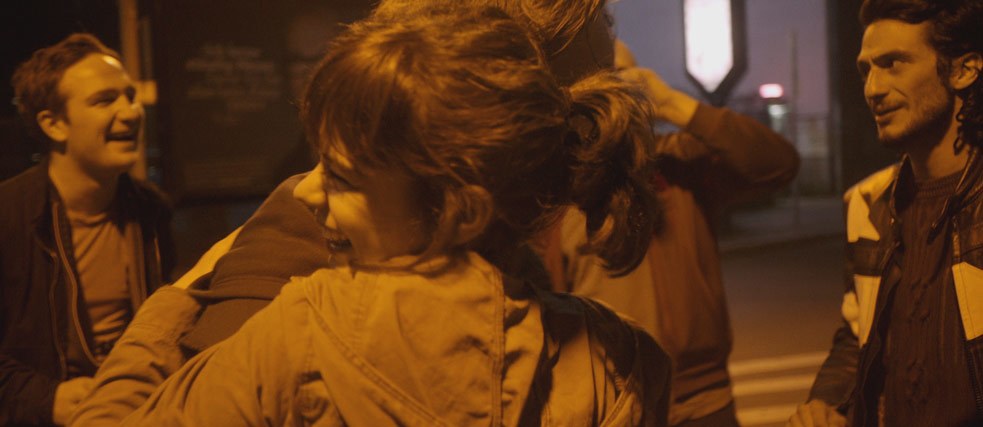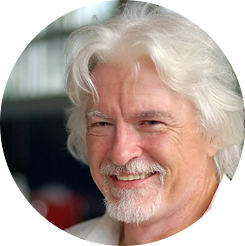Victoria
The Unedited Thriller

It’s wonderful when movies surprise us, toppling our expectations with an audacious blast of creativity. Which is how Victoria, Sebastian Schipper's remarkably innovative love story, suspense thriller and character study, struck international audiences, critics and award festivals.
By Colin Covert
Filmed in Berlin in one take, in real time and 22 locations, Victoria adds a new chapter to the manual of filmmaking. Shot between 4:30 and 6:48 a.m. on the darkened streets of the Mitte district, it includes no cuts, no seams, and no accidental entrances by the three teams with boom microphones recording the impromptu dialogue. Throughout the breakneck story, its fluid, seamless digital cinematography never falters.
Nor, more astonishingly, do the actors, who are all raw honesty. Laia Costa plays Victoria, a 20ish Spaniard new to the city, looking for some more excitement at a late-night rock ‘n’ roll club. She falls in with four rowdy “real Berliners” who share her second language, broken English. The streetwise roughnecks are Sonne (Frederick Lau), a flirtatious charmer; his best friend Boxer (Franz Rogowski), a skinhead just out of jail; Blinker (Burak Yigit), their panic-prone Turkish pal; and Fuß (Max Mauff), who is cross-eyed drunk.
Fuß can’t drive when one of Boxer’s criminal associates orders the hooligans to make a large, per-dawn bank withdrawal. Gambling that the dangerous act will break her free of her humdrum life, Victoria takes the wheel. The camera follows the outlaws weaving and scrambling across strobe-lit dance floors, on bikes, up elevators, in vans, across rooftops and into a final crescendo of slipups and catastrophes, some of them fatal.
Victoria is the fourth feature by Schipper, who acted for over 20 years, most notably playing a small role in Tom Tykwer’s kinetic caper movie Run Lola Run. After directing the 1999 comedy hit Absolute Giants and two poorly received dramas, he needed to grab the film world’s attention. He chose a feat equivalent to Houdini having himself locked in a box and thrown into the sea to prove that he could get free. Schipper proposed a youthful German Bonnie and Clyde, shooting the story of romance and robbery in one nonstop take in the manner of a war photographer. “It’s not about setting up immaculate framing,” he told Britain’s The Independent. “You follow an event that is snowballing, and you can’t quite believe what’s going on, what’s going to happen next? You just want to get closer to the action.”
The nonstop long take is hardly new – the first films ever made were shot in a single take – yet even today it’s as rare as gold dust. Though celluloid film was limited to 10-minute reels, Alfred Hitchcock’s 1948 thriller Rope hid its editing so it appeared to be all one shot. The technique didn’t return to the screen until digital cameras replaced film stock in the late 1990s. Russian Ark, shot in 2002, offered the spectacle of 2000 cast members and three orchestras amid 33 rooms at the Hermitage museum in St. Petersburg, an uninterrupted tour of three centuries of art and history.
Schipper didn’t watch Russian Ark or Rope for reference. Cinematographer Sturla Brandth Grøvlen chased the story’s characters through their nighttime odyssey, sometimes at a distance, sometimes up close. Schipper followed alongside. “Sometimes I didn’t want the actors to see me, sometimes I did,” he told the Financial Times. “I was like a coach on the sidelines.” The ensemble didn’t need much guidance. Schipper had given them only a dialogue-free 12-page summary of the film. The cast improvised every word on the spot.
In other ways, Schipper’s control was meticulous. One rich character note involves Victoria playing a piano passage from Liszt’s “Mephisto Waltz.” As she performs, she tells Sonne about losing the musical scholarship that was her life’s goal. Schipper, whose mother was an organist and named him after Bach, dubbed another pianist over Costa’s playing, adding dazzling tones of “the devil dancing” to the piece, representing her growing awareness that she has little to lose.
Rather than seeming a showy experiment, Victoria makes its difficult technique pull us in ever deeper. Somehow, Schipper’s one-shot stunt works beyond all expectations. The nonstop action begins like a descending snowball, becomes an avalanche, and ultimately triggers a landslide.
author
 © Colin Covert
Colin Covert is a Columnist who has covered films for the Minnesota-based Star Tribune for 30 years, interviewing everyone from Woody Allen to Wim Wenders. Rated a “Top Critic” on the fan site Rotten Tomatoes, he has been named “America’s most scathing” movie reviewer. He still gets a thrill when the theater lights dim and – all too often – a bigger thrill when they come on again.
© Colin Covert
Colin Covert is a Columnist who has covered films for the Minnesota-based Star Tribune for 30 years, interviewing everyone from Woody Allen to Wim Wenders. Rated a “Top Critic” on the fan site Rotten Tomatoes, he has been named “America’s most scathing” movie reviewer. He still gets a thrill when the theater lights dim and – all too often – a bigger thrill when they come on again.